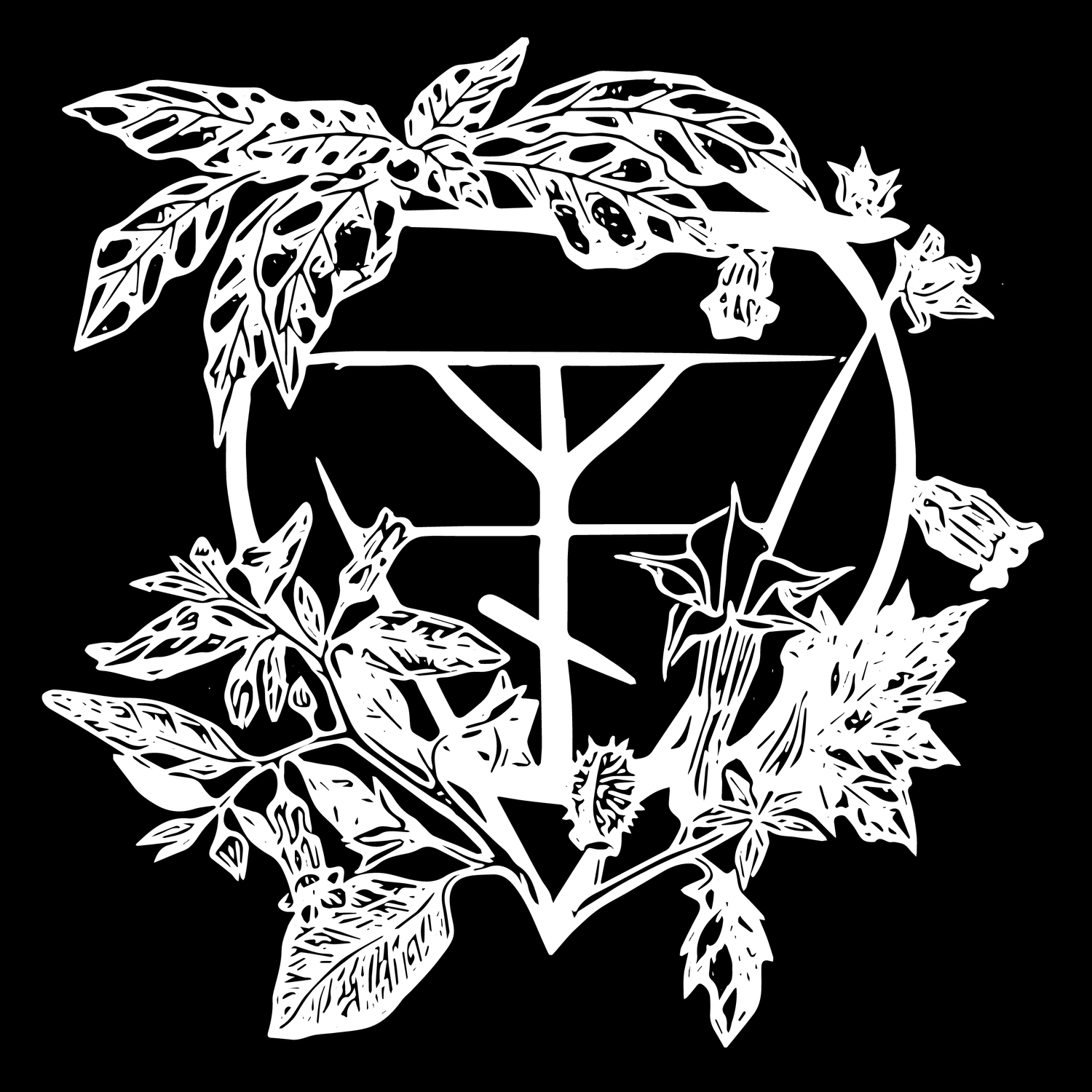Nightshades All Around Us: Solanum dulcamara
Nightshades All Around Us
JULY 23, 2019 BY Coby Michael
Personally, there is no group of plants that is more interesting both magickally and chemically than the Nightshades. The Solanaceae are a large and diverse group of plants that provide us with things like tomatoes, peppers, potatoes and eggplant. Even tobacco is a member of the Nightshade family. Nightshades are used by people every day without them even knowing it.
All of the plants within the Nightshade family contain some kind of active alkaloids. Even less poisonous ones like tomatine, solanine and nicotine are in tomato plants, potato plants and tobacco. The more dangerous nightshades like Belladonna, Datura, Henbane and Mandrake contain more potent alkaloids like scopolamine and atropine, which have resulted in death, hospitalization and unpleasant hallucinations. Although they can be poisonous, they are also very valuable medicinally. They are very effective at relieving pain when used topically. They help with gastro-intestinal issues, are effective sedatives and are used as anesthetics.
Nightshades Grow Everywhere!
While the more infamous Nightshades, like Belladonna and Mandrake are very interesting and fun to grow they are either not native to North America or difficult to find, often popping up in unexpected places. They typically are found across central Europe and the Mediterranean, with the exception of Datura, which seems to make its home everywhere.
There are some varieties in the Nightshade family that are widely distributed across North America. You have probably passed them hundreds of times without even realizing it. Plants like Silverleaf Nightshade, Black Nightshade and Woody Nightshade like to grow along fences, in the cracks of side walks, and in the case of Woody (Creeping) Nightshade, inside bushes, hedgerows and other trees.
Woody Nightshade (Solanum dulcamara)
Solanum dulcamara, is also known as , bittersweet nightshade, bitter nightshade, blue bindweed, Amara Dulcis, climbing nightshade, fellenwort, felonwood, poisonberry, poisonflower, scarlet berry, snakeberry, trailing bittersweet, trailing nightshade, or violet bloom. It is a perennial woodland herb that grows on a semi-woody vine. It can reach up to 12 feet when there is available support. Generally you won’t find this Nightshade growing out in the open by itself.
The roots of this plant spread under ground sending up new plants that quickly take over an area. As the plant matures the stems turn dark, eventually hardening and developing a woody bark, hence the name Woody Nightshade. The mature twigs can be cut and used for magical purposes just like the rest of the plant. They grow rather long giving one the option to cut a wand length stem or shorter pieces for bundles. I love harvesting roots and using them as altar pieces because they maintain the essence of the plant the longest and hold its spirit when regular offerings are maintained. Woody Nightshade is a great herb for binding, but it also helps to integrate the shadow and work with our own spiritual development.
The leaves of this plant are arrowhead shaped and are often, but not always lobed at the base. While the plant is mainly saturnian in nature, it does have some martial qualities to it as well, making it useful in defensive and offensive magick. The berries when unripe are green, and contain the highest concentrations of alkaloids. They contain steroidal alkaloids and saponins. Although, technically poisonous they are not as deadly as berries from Atropa belladonna.
The stems are used medicinally and can be collected in the spring or autumn. They can be used in preparations that are immune suppressive. The steroidal alkaloids have effects which are like cortisone. The plant is also anti-inflammatory, and is known for its use as a skin tonic. Infusions can be made to treat chronic skin conditions such as dermatitis and psoriasis.
Magickal Properties
Woody Nightshade is a great plant to introduce oneself to baneful herbs, as it shares their saturnian influence. The plant was traditionally used to protect against sorcery, lightning and the evil eye. Its long stems can be woven into circlets or garlands. They were once hung around animals necks or placed above doorways for protection. It is considered a fairy herb, and its ripe red fruits can be given as offerings to nature spirits and chthonic female deities.
Since it is a vining plant it is good for binding. The fresh stems are flexible and long enough that they can be used as a cord to bind objects for sympathetic magick. It can be included in incenses and formulas where the more chemically potent witching herbs would be prohibitive.


